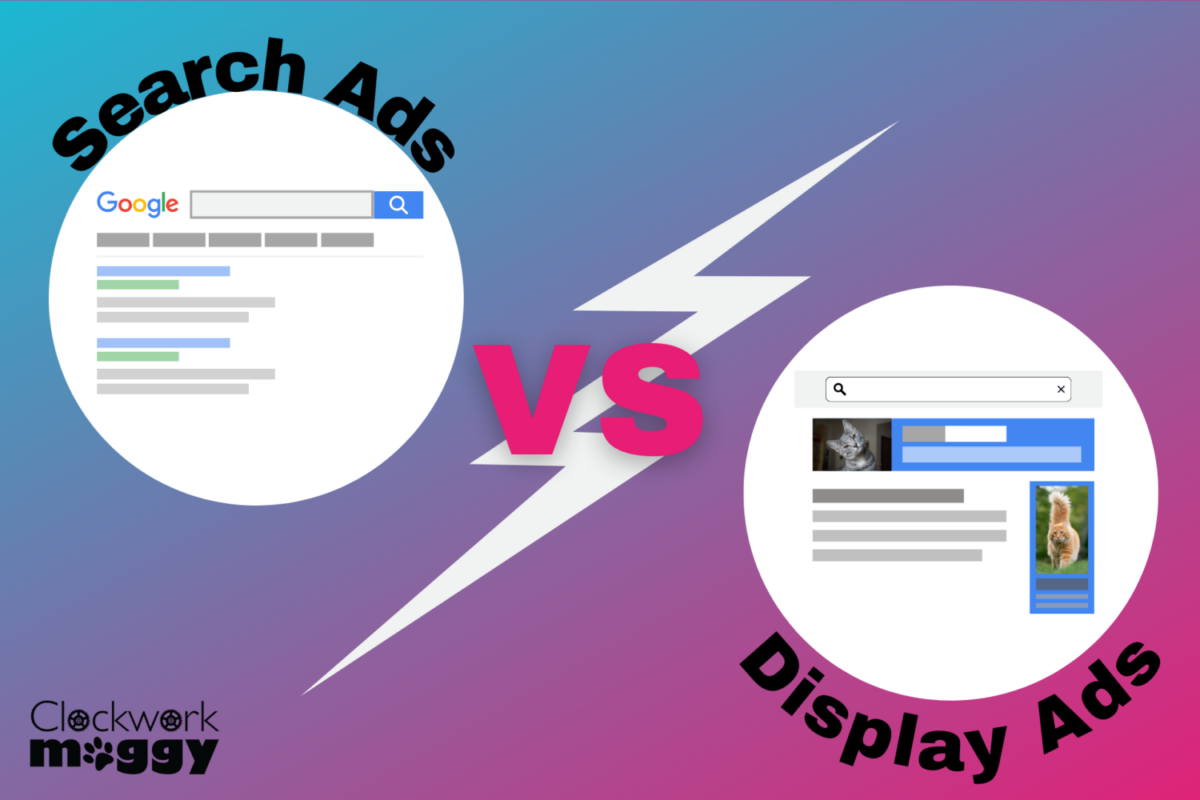When it comes to Google Ads the array of choices that you are given can seem overwhelming. You have multiple ad formats to choose from and countless ways to reach your audience.
Most people start with the search network as it seems straightforward, and will then slowly venture into display ads, mostly for remarketing purposes. But often this is not the best way to use either format.
So which format is the best for driving sales? Which is the best for creating brand awareness?
The reality is both Search and Display ads are massively effectively but they work in vastly different ways. So matching your advertising needs with the right advertising format is crucial to your success.
So what is the difference? And when do you use Search Ads over Display and visa versa? In this article, I am going to answer all these questions and guide you on when you should use display or search ads, as well as how to optimise these ads for the best results.
What are search Ads
Search ads are probably the ads that most people think of when it comes to Google Ads. They are the most popular form of PPC advertising whereby advertisers pay to have their ad displayed within search results. These ads usually show up above the organic search results at the top of the page. Google search ads use a simple auction-based model in which advertisers are bidding on keywords, these keywords relate to the search query the user types in.
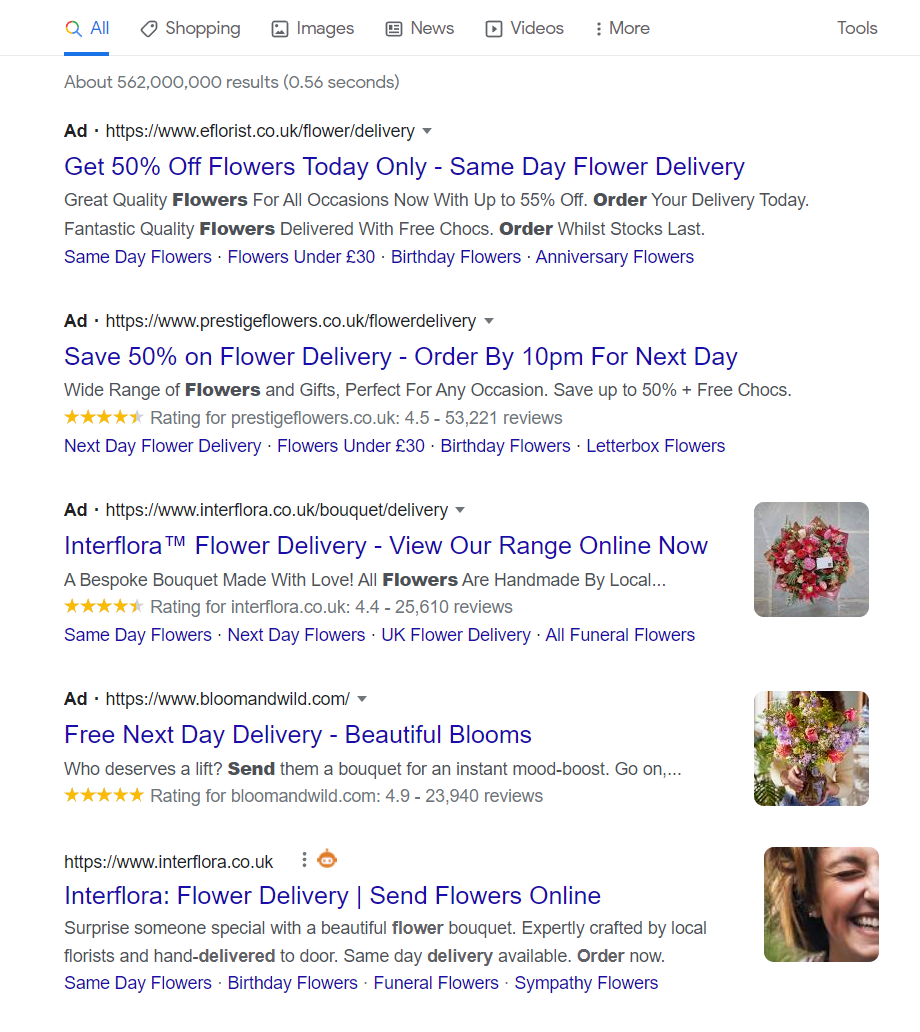
For example, a search for “Order Flowers online” shows 4 search ads above the organic search results.
Each search ad is made up of three parts.
- A headline
- This is the heading or title of an ad.
- A Display URL
- This is the URL that shows up at the top of the ad
- The Description
- This is the description of the ad, which gives the user more information about the services or products being advertised.
All these parts are designed to convince users to click through to the advertiser’s website.
Search ads can also have Ad Extensions that can also be added to provide users with additional information. These ads extensions include:
- Sitelink Extensions
- Call Extension
- Callout Extensions
- Structured snippet extensions
- Message Extension
- Location Extension
- Price Extension
- App Extension
- Promotion extensions
How high up in search results ads show, how often they are shown and how much you pay for are clicks are all controlled by the Quality Score of the keywords that triggered your ad. The higher the quality score the better.
The search network is one of the best places to advertise and it has been reported that on average advertisers on average make $2 for every $1 spent.
What are Display Ads?
Although like search ads, Display ads are set up and managed through the google ads interface, display ads perform very differently from their search counterparts.
Display ads are the picture ads you see on certain websites. They can show up at the top of the page, on the side or within the content of the page itself.
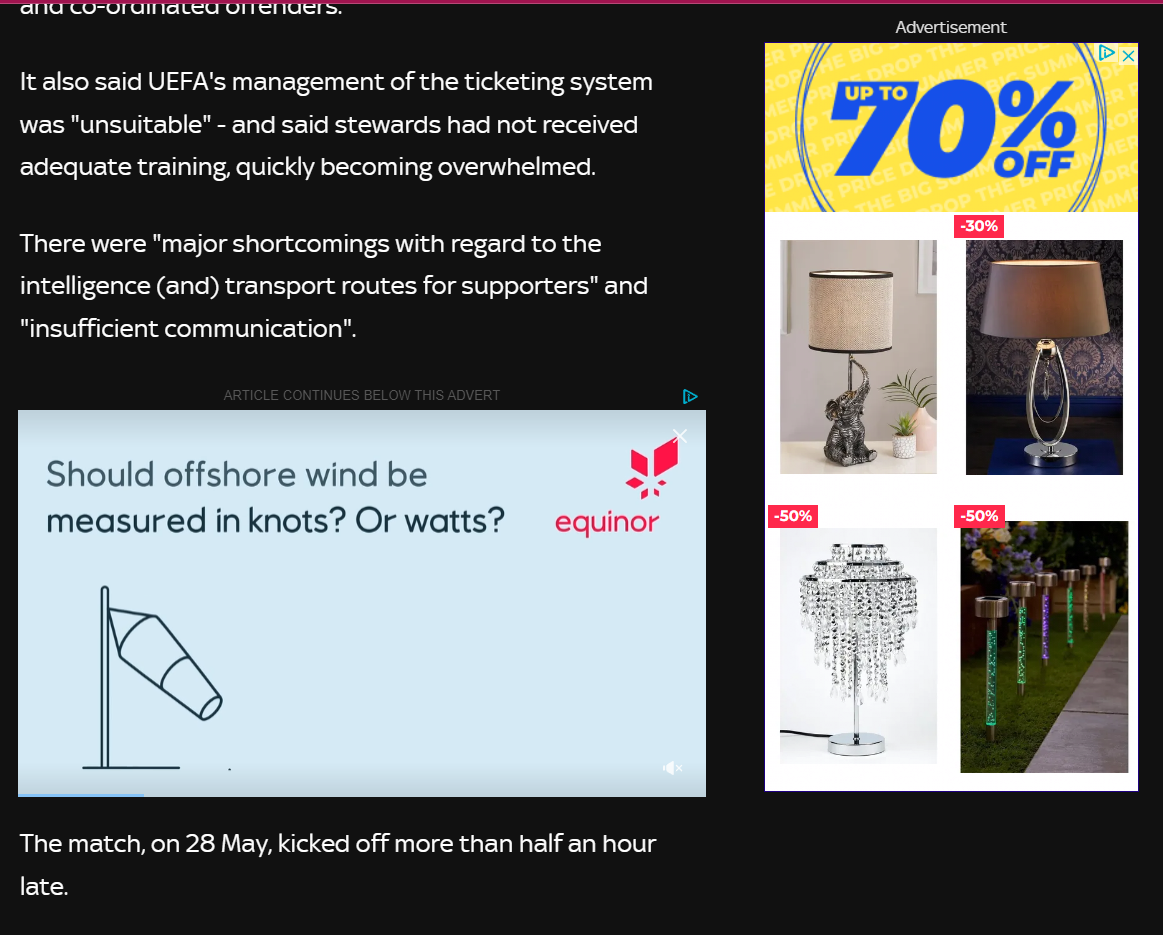
They are made up of 4 components.
- An Image
- This is the main image you will use in the ad
- A Headline
- This is the heading or title of the ad.
- The description
- This is the description of the ad, which gives the user more information about the services or products being advertised.
- A CTA Button
- This is the button on the ads such as Buy Now, Learn More etc
Where, when and how the ads show, is determined by the audience and location that you set for your display ads. Unlike search ads, display ads aren’t limited to appearing in only one location. The display network (the network of websites that allow Google to place ads) has over 2 million websites worldwide, including email inboxes.
The Difference between Search Ads and Display Ads
Passive VS Active
The main difference between Search Ads and Display ads is the audiences. Search ads serve people actively searching for the services or products you are selling. This is known as an active audience. This is why your search ads need to focus on a searcher’s intent.
Display ads on the other hand have a passive audience. This essentially means that the people who will see your ads are not actively searching for goods or services. Instead of targeting particular searches Display ads use audiences to target specific people. For example, if you are a selling course on woodwork you could target an audience that has an interest in DIY, or if you sell flower bouquets you could target people who have recently got engaged or people who are interested in wedding supplies.
Conversion rates
As you may expect due to the difference in the audiences, the average conversion rate and the average cost per click vary massively between the two platforms.
The average conversion rate across all industries for the search network is 4.4% whereas it is only 0.57% for the display network.
The Average Cost Per Click across all industries for the Search Network is $2.41 and only $0.59 for display network ads.
When to Use Each Ad Type
Google’s recommendation is to use both Displays and Search simultaneously since they work so differently this will provide an advertiser with the most reach. However, reaching the most users possible is not always the outcome you are looking for. Especially as the key to successful advertising is reaching the right audience, not just the largest audience possible.
When to use Search Ads
- To compliment Organic Traffic
SEO has become a much more popular form of marketing in recent years, however, SEO can take a long time to get consistent results. Often comparative content, such as blogs focus on organic results, whereas search ads directly lead people to solutions in a much more efficient way. This makes search ads great at bringing in traffic while your organic presence is still building up.
You can also use Search ads to support your organic rankings. This means you have twice the chance of turning up in the search for certain keywords with both your organic and paid listings.
- To Capture high intent leads
Since Google ads use keywords to match your ads with search terms users type in. You can accurately predicate intent. This means that Google search ads can target all those that are ready to buy or sign up now.
If you implement Negative keywords and good use of Match types you can also help narrow this search to the most relevant search possible.
- To Capture local search
With Search Ads, you can target individual geographical locations. For instance, if you are a local Pet Store in Canterbury, you won’t want your ad to show to people searching for “Pet Stores” in Edinburgh, but you will want it to show to people searching in Canterbury. Not only do Search Ads allow you to target and advertise in a certain area but you can also create local search campaigns. These campaigns display ads with the local pack of Google Search as well within the Maps tab of organic search.
- To promote urgent products
Search ads are ideal if your product or service is “urgent” or “Emergency” such as Plumbers or locksmiths. These are services that people are in urgent need of now, so they are much more likely to convert there and then, without shopping around. So Display ads or Social Ads are not going to be the best fit for this need.
As an additional note, these types of time-sensitive searches are more than likely going to be searched for on Mobile. For that reason, I would suggest implementing both Call Extensions and an increased bid for mobile devices.
- You have a smaller budget
If you are just starting out, or don’t have a lot of budget to spend then search ads are the best place to start.
- Google Search Ads are Pay Per Click you can easily manage how much you spend, and you only pay when someone actually visits your site.
- By bidding on long-tail or highly relevant keywords gives you more control over what searches you are displaying on. This way you are better able to predict higher conversions rates and better ROI
- It is a great way to test the waters of advertising for your business. Once you have mastered that you can consider expanding your reach via the display network
When to use Display Ads?
- If your product or service is visual
One of the main advantages of Display ads is that they can be visually based, using images and videos. So if you have a visually relevant product such as clothing, homeware or holidays then display ads are going to be the best way for you to display your services or products online.
- To build brand or product awareness
As mentioned before Display ads have a passive audience because of this they are likely still in the awareness or interest phase of the customer journey, researching their options with passive intent.
This makes the display network great for creating demand for your product or service, especially when they don’t know if they even need it yet. This means that you can use the display network to cultivate a feeling of want and need, instead of immediately capitalizing on one that already exists as the search network does.
- If your sales cycle is longer
Just as search ads are perfect for short sales cycles that don’t require multiple touch points, display ads are ideal if your product or service needs a longer sales cycle. Such as items with a higher value that need a longer amount of consideration before purchase, Such as cars or business software etc.
In these kinds of situations, you need to try and stay at the forefront of potential customers’ minds as they consider their purchase.
Some digital marketing strategies for longer sales cycles are:
- Cross-Channel Marketing – This is a strategy that spreads your paid message to prospects across multiple marketing channels such as the Display Network alongside other channels.
- Retargeting – Retargeting is a marketing strategy that specifically targets people who have already encountered your brand, even after they have left your website. These ads can be incredibly useful, you will often see these ads on Facebook as well as the Google Display Network.
- To reach niche markets
One of the reasons that make Display Ads successful is that they are generally found on websites where potential customers are already spending their time. Google matches your keywords and ads to relevant web pages across the over 2 million websites on the Display Network.
This means you can easily modify your ads to attract a niche audience. For example, this ad by Revolve is displayed on a blog called “Cute Summer outfits” meaning Revolve is likely getting in front of people who will be interested in shopping their summer wear range.
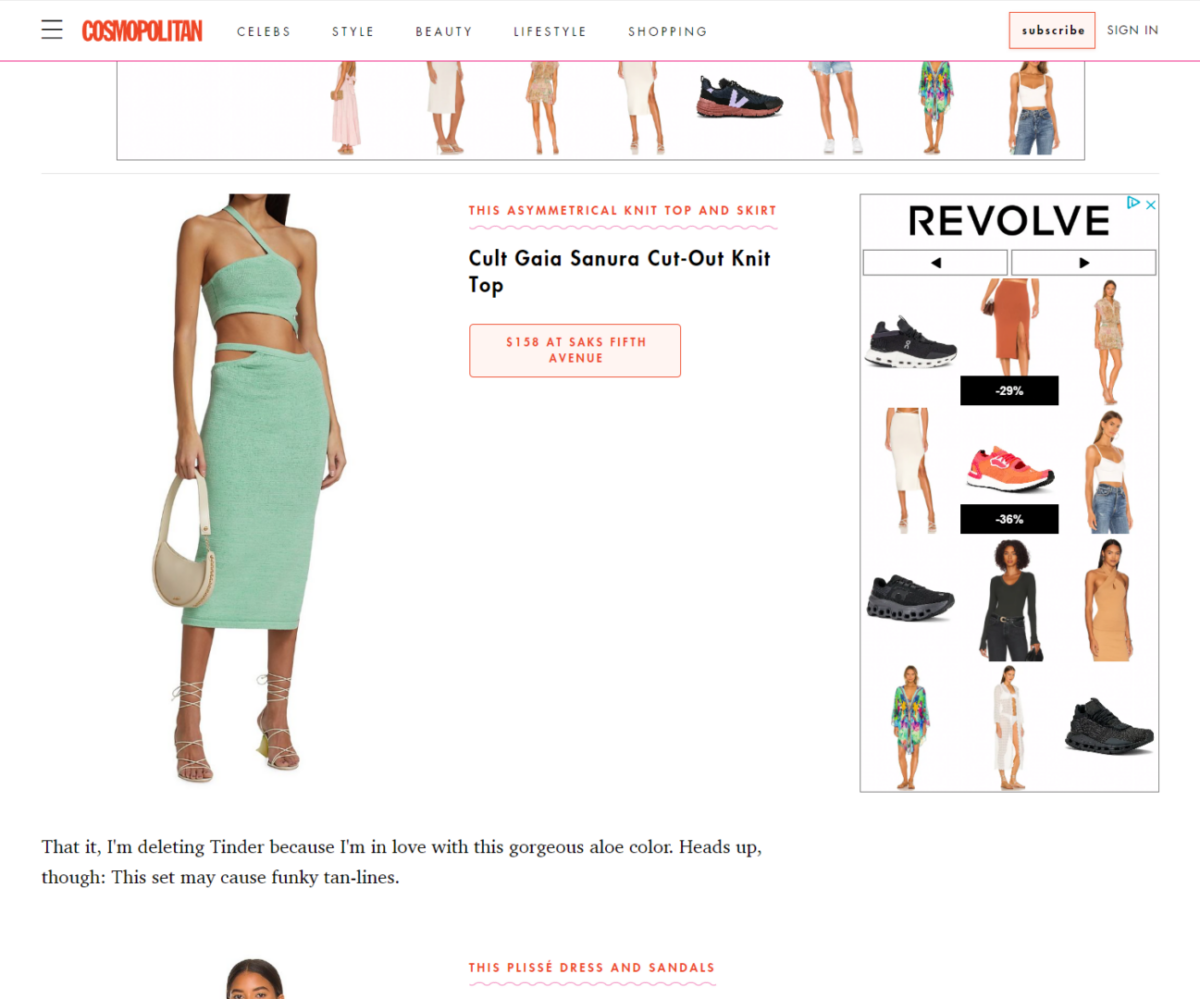
How to best optimise your search and display ads
Search Ads
As previously mentioned Search Ads are best for capturing customer intent. So capturing that intent within your ad text is crucial to your success.
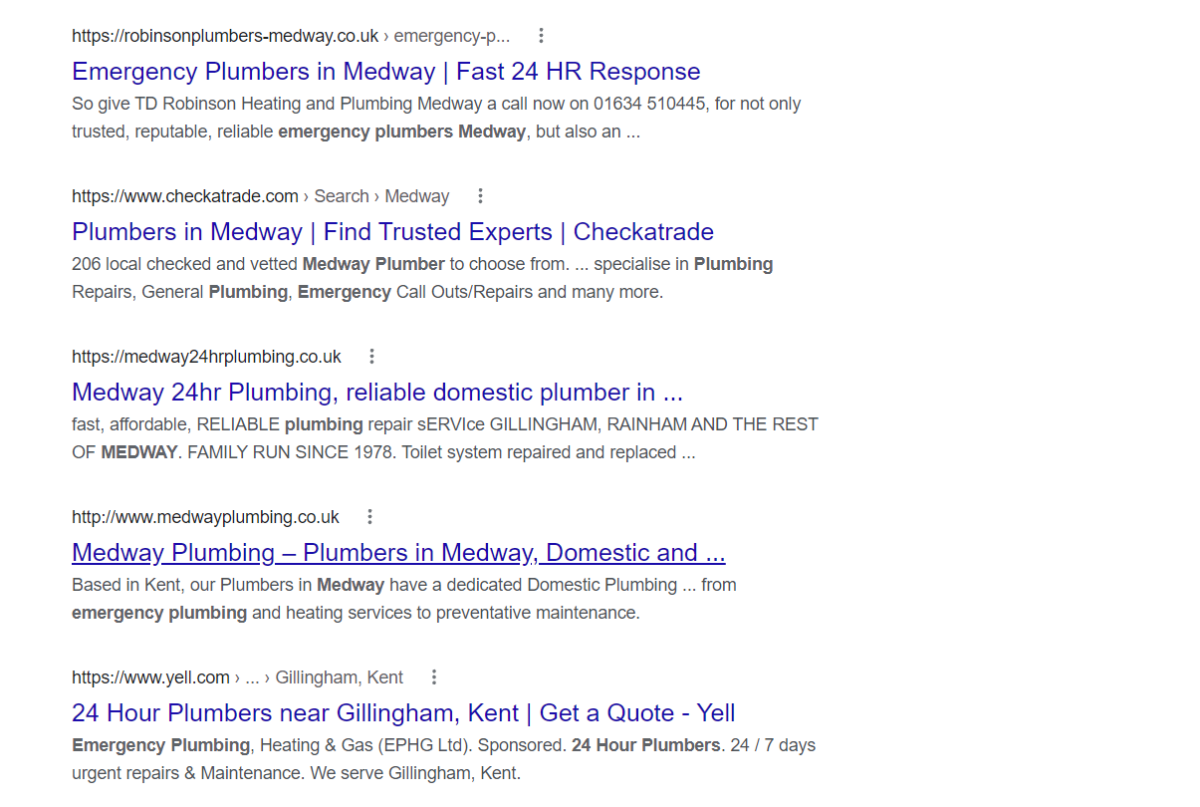
When a user comes to Google with a pain point or need, that will be clear in their search query.
For example, a user has a leak in their bathroom so they search “emergency plumber”. They won’t be able to wait to see a display ad. That’s where the search network excels it thrives in direct intent-based searches.
A great way to analyse intent for search is to look at the organic listings for your target keywords. These will help you understand how to structure your ads to best fit the users’ search.
For example, our search for “emergency plumber Medway” gives you pretty straightforward organic results. They are all focused on giving the user a list of plumbers. So an ad for an emergency plumber will probably capture a lot of traffic.
However, if you were searching for something like “best headphones”. The organic results focus on comparative content, offering reviews and opinions on various products. Whereas the paid ads are all single companies claiming to make the best headphones. For this comparison, I would not expect these ads to convert effectively, as the intent of the searcher and the offering of the ad do not line up.
Just bidding on keywords is not enough, you need to think about what the expectation of a search is. Once you have cracked this you are well on your way to having professional Google search ads.
Display Ads
The biggest mistake people make when it comes to gauging success on the display network is comparing it to the search network.
It can be frustrating if you are seeing great results on the search network so when you head to the display network, while the clicks are cheap, the conversions aren’t coming in. The display network can be a lot cheaper than the search network with an average CPC of just 50p but as previously mentioned the conversion rate for display ads are less than 1%.
This low rate often leads people to abandon the display network.
For you to get the display network to work you need to understand the customer journey.
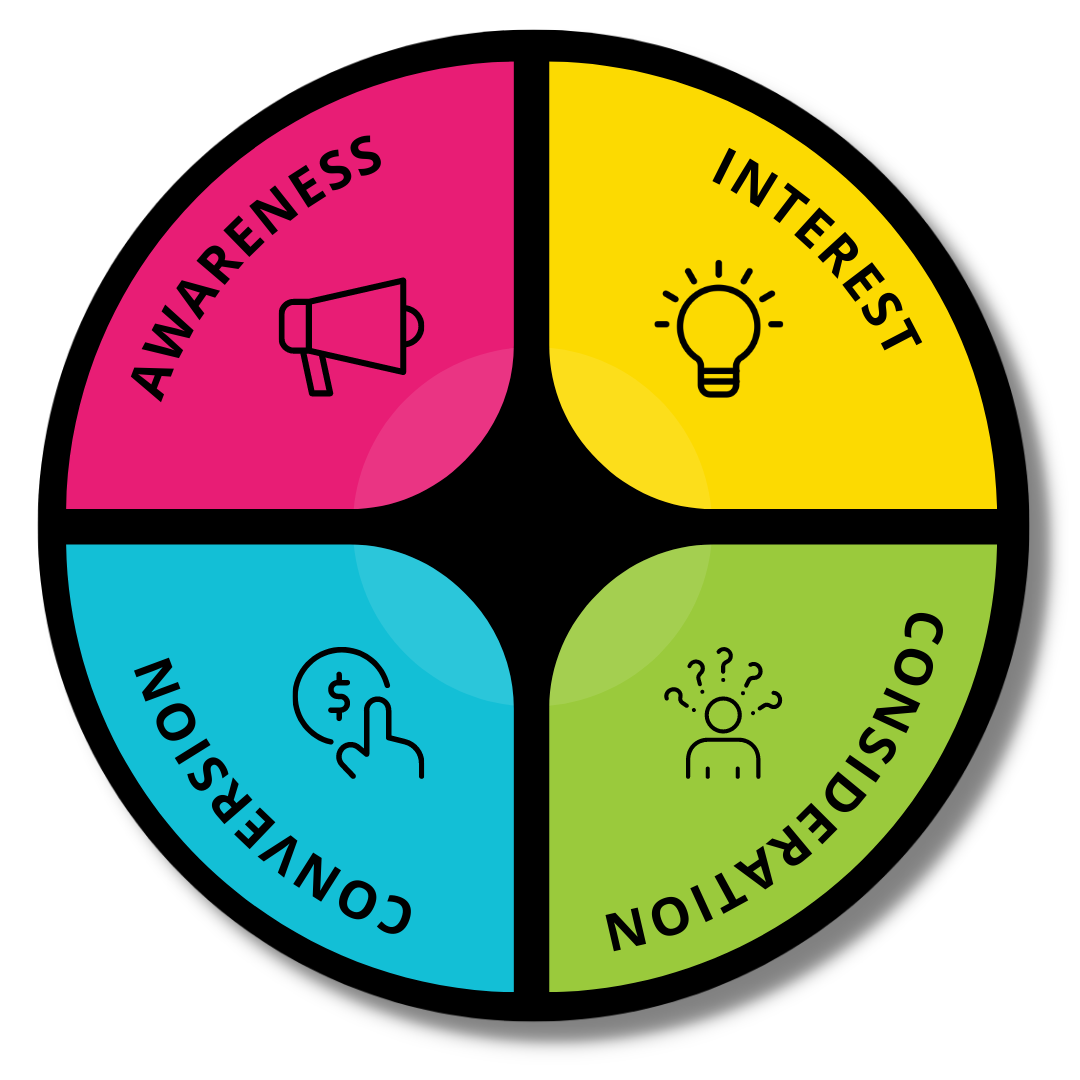
The display network works to create demand rather than answer demand like the search network. You can use your display ads to help create a want or need for an item rather than taking advantage of the want that already exists.
Conclusion
Knowing when to use the right advertising platform is key. Both the Display network and Search Network have their uses. Understanding their distinctions and where they excel is the key to achieving your marketing goals.
After you have chosen your Ad formats make sure your landing page is up to scratch. After all these landing pages are where any conversions will take place.
Display ads and search ads are both great for driving sales. All you have to do is provide the right offer and creativity for each.
What ad format are you using?
WANT TO LEARN MORE ABOUT GOOGLE ADS
Check out our other blogs for more tips or tricks including Google Ads or Connect with us on social media.

